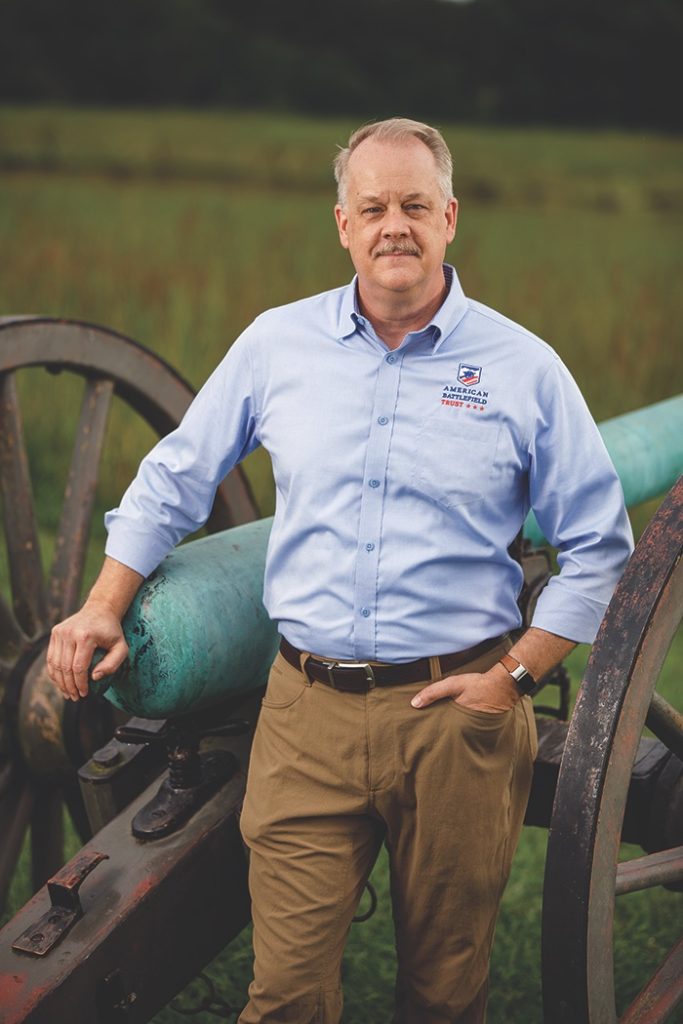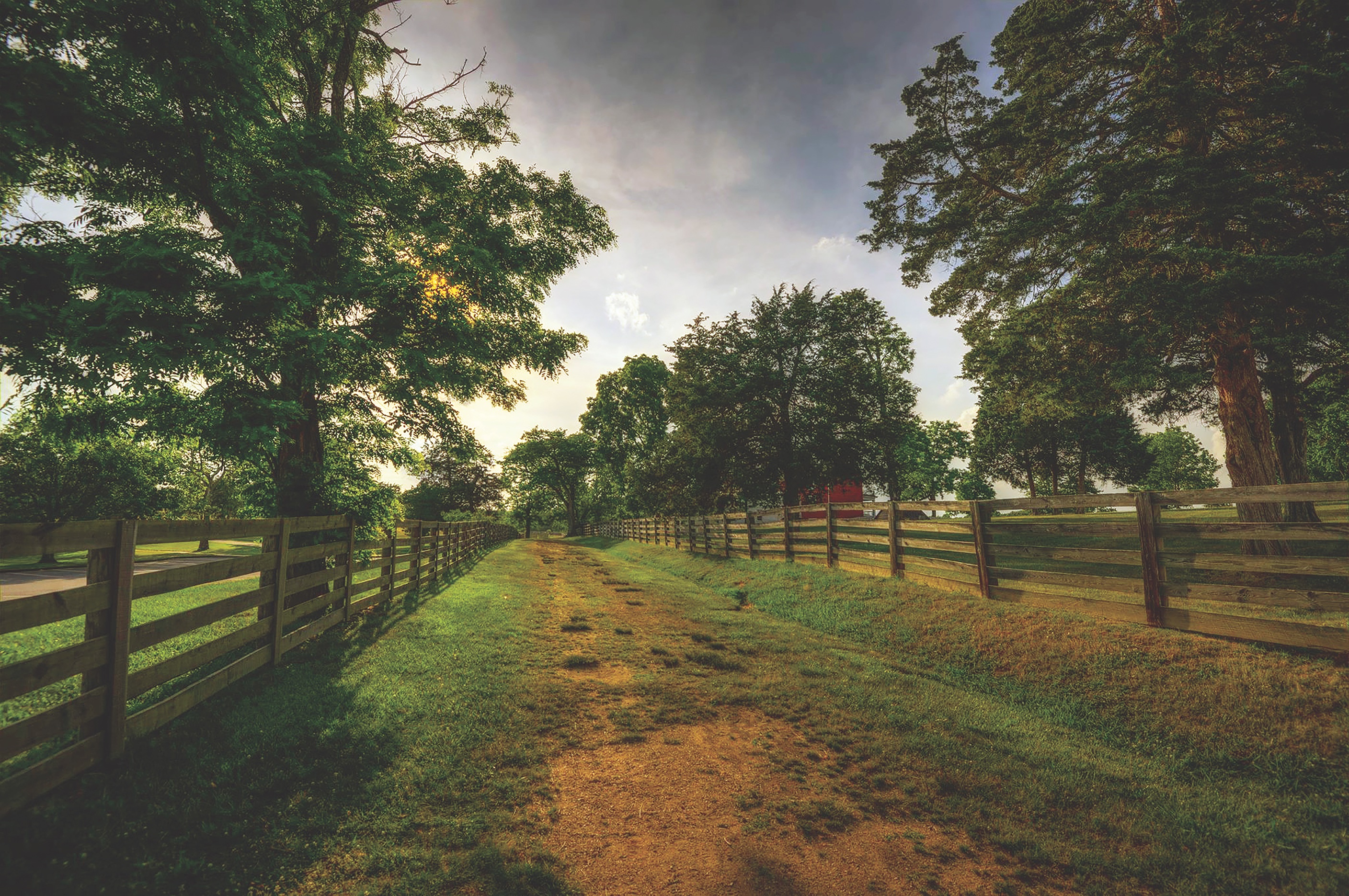
In October 2020, David Duncan took over the position of president of American Battlefield Trust, following Jim Lighthizer’s long tenure. A lifelong Virginian, Duncan became a member of the Civil War Trust in the 1990s. When Jim Lighthizer became the president in 1999, he hired Duncan as chief development officer for his background in direct mail and fundraising. Over Duncan’s two decades in that role, the organization—renamed the American Battlefield Trust in 2018 with an expanded mission—has raised $240 million and preserved nearly 45,000 acres of battlefield.
CWT: Tell me the challenges you are facing.
DD: Jim announced his intention to retire formally in October 2019, and the world had not so radically changed at that point. My first interview with the search committee was in February [2020], and when it was announced in September that I would be following Jim, I had at least one person send me a congratulatory e-mail saying you must be a really special person to want this job at this time. It would have been enough of a challenge to follow a tremendous legacy leader like Jim Lighthizer. Then let’s throw in the added difficulty of a worldwide pandemic and extreme economic uncertainty. I am reminded of wise words on the subject of rising to the occasion spoken by Winston Churchill: “We don’t always get to pick the hour, sometimes the hour picks us.” There’s not a single thing I can do about it except show up and do my job every single day.
CWT: Have battlefield visits increased during the pandemic?
DD: My wife and I were doing some hiking trails on the Manassas Battlefield. We got there at 10 a.m. and the parking lot was already filled and the cars were parking on the grass all the way down to the main access road. It was astounding. I heard the same thing back in the fall about Gettysburg.
CWT: Has it helped the Trust raise money?
DD: We had a pretty good year in 2020 all things considered. We don’t have museum buildings to maintain. We have battlefields to maintain, but that’s cutting grass and taking care of brush. It’s not nearly as expensive as running a museum. We don’t have fundraising events per se. No galas to cancel. We have an annual conference, but we generally keep the prices low so more members can attend, and hopefully break even. Our model is to go out and find important battlefields to save, put together the matching grant opportunities using federal, state, or other private matching money and ask our members for help. We’ve got the best and most generous members in the nonprofit world. We actually had more donors in 2020, by a small percentage, than we did in 2019.
CWT: Do you know why?
DD: Our education team puts a new article or video out on our website at a rate of almost one per day. And people are stuck at home and they are looking for great content. Some of it is educational material or virtual battlefield tours. We were well positioned for that before the pandemic, and we pivoted to that and it took off.
CWT: Has the move to dynamic media been a long-term push?
DD: Members still clamor for our magazine, and we still bring in most of our money from the old process of direct mail. The web aspect of our fundraising is growing, as it should. It’s a very conscious expansion toward that online content. A million people watching our YouTube videos every month is a wonderful thing. At the same time, my hope is that eventually folks watching will support us financially. At the end of the day, we need to raise money to continue to save land.
CWT: Is there one fight to acquire a battlefield that stands out as the most challenging?
DD: Just at the end of the calendar year last year we announced making progress to preserve a nearly square mile of property that was the central part of the Battle of Gaines’ Mill in 1862 and Cold Harbor in 1864. And from literally the day I walked into this organization almost 21 years ago, if you asked what’s the most important unprotected piece of battlefield in the country, this was it. This property is in the heart of both of those battlefields and it is absolutely pristine. We have five years to raise the money to complete the transaction, and the details are different from transactions we’ve done before. It’s been in the family since before the war, and when you get back in the property you feel like you are in 1862 and 1864. It’s not the most expensive deal we’ve done, but it is in the top five.
CWT: What is the value of pristine battlefields?
DD: To be able to see and walk that ground in their footsteps; there is no better educational or interpretive experience. I’ve had that experience at the Slaughter Pen Farm at Fredericksburg, which we saved several years ago. From the road it looks like a tabletop flat piece of ground, but when you walk it, you can read about the experiences of the soldiers who went across that field and see the minute changes in topography. There is nothing better. I hear people say, “I read about the battle, and then I walked the ground and, oh my God, it changed everything I thought about that battle. People crave authenticity and want to be on the ground where those events happened—as opposed to standing in a parking lot or housing subdivision.
CWT: How do you sustain interest in battlefield preservation?
DD: There are always going to be people interested in our country’s history. Preservation will forever be the cornerstone of what we do, but what we’re attempting to do with our education efforts and online work is to expand the scope of the stories that can be told about these battlefields. We’re working on a project called Fighting for Freedom, which focuses on African American troop contributions at many of these battlefields. We’re putting together a driving tour and an app, so you can virtually tour these battles. Younger folks are looking to have more of those experiences.
CWT: Any comment on Confederate flags being carried into the Capitol on January 6?
DD: This isn’t new; it’s been misused over the years. What keeps coming to my mind are the words from Lincoln’s First Inaugural speech, especially at the end, the last paragraph: “We are not enemies but friends. We must not be enemies.” He’s saying this as the country is coming apart at the seams. We have to embrace that kind of thinking again. If the Civil War taught us anything, we can never go through that again. By preserving the places where we did it once we can learn from them and know that we never want to do it again. That’s why I’m in this job. I think this is very, very important to the future of our country. ✯
Interview conducted by Senior Editor Sarah Richardson.





